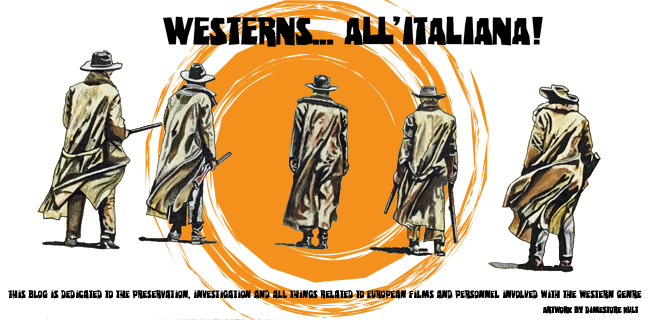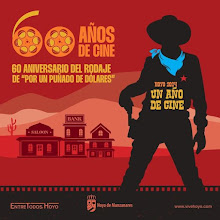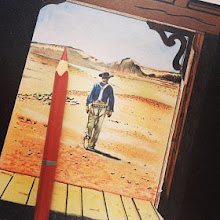By Jordan Krub
First of all, I want to say that this project is a labor
of love and not for profit. The new footage presented on this blog is for
research and education purposes only. No copyright violation is intended, my
partners and I simply want to share this remarkable discovery with Leone fans
around the world.
In 1966, Sergio Leone released "Il Buono, Il Brutto,
Il Cattivo" in Italy.
1n 1967, the film was recut and shortened by approximately
15 minutes into an "International cut" and released worldwide. Each
country made further cuts based on their individual censorship laws, except for
the U.S. and Canada, which released the international cut in its full length.
In 2014, MGM released on home video a 4K restoration,
sourced from the original camera negative, of the most complete version (to
date) of The Good, The Bad, and the Ugly. This cut combines almost all known
elements from both versions (the international cut has unique footage not found
in the Italian releases).
However, despite the overall quality of the release,
there was controversy amongst fans of the film over the greenish/yellow toned
color correction the Italian restoration team chose to apply.
Since L'Immagine Retrovatta / Cineteca di Bologna went
back to the camera negative, they were forced to "re-time/re-color"
the entire film, supposedly using a vintage print as reference. Two years
later, having personally seen scans of 5 different vintage 1966/1967 prints from
Italy/ Canada/U.S.A/ and Germany, I can say without a doubt they went too far
with the yellow/green tone and it does not reflect the original colour
correction of the film as released in 1966/1967.
In 2014 a private collector purchased and shipped an
original 35mm print from Italy in order to examine the color as a means of
using it as a reference to personally color correct the new MGM 4k master and
create a "fan version" of the film. A few of us partnered up to work
on this project, bringing together both financial resources and individual
skills. Scanning a 35mm print at 4k is a costly venture, with many technical
hurdles. Doing the due diligence and research is also a time consuming process,
which has taken the better part of 2 years.
Once the print was scanned, it was discovered to be a one
of a kind treasure, with new footage and differences not present in ANY home
video release (worldwide).
Multiple sources were checked against the print, 8mm
films released in the 70's, multiple vhs and pal copies from around the world
dating all the way back to the early 80's. The new footage from this particular
print simply doesn't exist anywhere else, even on other vintage 35mm Italian
prints (more on that later).
The differences discovered so far on a preliminary
examination are as follows:
1. Extra footage (3 new close-up shots) in the early
scene where Angel Eyes visits the farmer
2. A fragment of a scripted deleted scene at the end of a
reel
3. The complete beating scene (including portions that were
damaged on the print MGM used as
their reference
and included as a bonus feature on DVD and BLU)
4. Various music cue and sound effect differences.
5. Longer character titles in the final scene.
Here is a comparison scan of the unique footage found in
the early scene where Angel eyes visits the farmer. This is the first time this has been shared
publicly. The color correction on the new footage is only an approximation of
the original color, the print is 50 years old and is literally covered in grime
and dirt. Some preliminary digital cleanup has been applied to remove dust and
scratches.
We firmly believe this is the last surviving print with
these unique differences. This print was in really rough shape and destined to
be lost to history, it's pure chance it survived and has ended up in the right
hands.
So, as referenced above, how can we possibly know what
the Italians have in their vaults?
In 2000, they released ALL of the information we needed,
detailing every print in their possession. I'll let the authors of the book
which specifically references the 2000 restoration of the film explain further
(Many thanks to Leonardo Beeler for the translation), needless to say, there's
no reference to the unique differences found in THIS print, other than the
mention of the complete beating scene present on another print which MGM used
as an extra on their recent home video releases:
[To be continued]











No comments:
Post a Comment